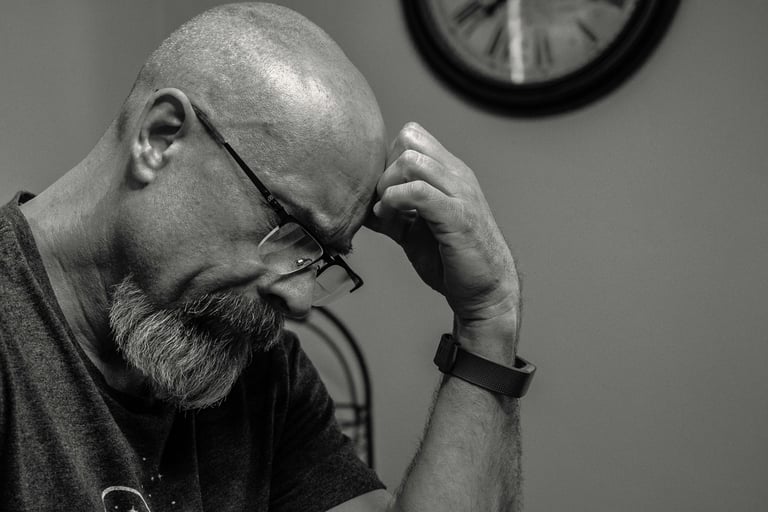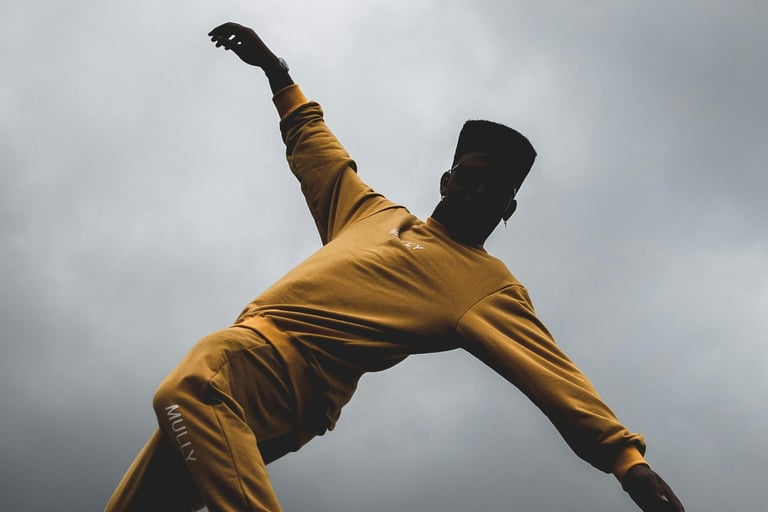Why Embodiment isn't the Answer
A somatic series on movement, meaning, and why you were never not in your body.
Mike O'Connor
7/7/20253 min read
The problem with the word that’s supposed to fix the mind-body split
The word embodiment has become a buzzword — in healing, coaching, therapy, dance, even leadership. It promises a return to the body, a move away from overthinking, a sense of presence and integration. But for all its good intentions, the term might be part of the problem it claims to resolve.
In Western thought, the body and mind have been famously split ever since Descartes declared “I think, therefore I am” in the 1600s. This idea — that thought defines existence — helped structure centuries of philosophy and science. Philosopher Mark Johnson explains that Descartes positioned thinking as more knowable than bodily experience. From there, a divide grew: one between the body and the mind, and another between knowledge and the external world.
In recent decades, much work has gone into undoing this. Johnson, drawing from John Dewey, reminds us that “body and mind are merely convenient abstractions from our primary experience.” In other words, we never experience one without the other. They’re not actually separate — we’ve just gotten used to talking like they are.
And yet, many of today’s healing or coaching practices still rely on terms like embodiment or mindfulness to try and repair this rift. They often define embodiment as “being in your body” — which seems helpful, until you ask: where else would I be? The phrase unintentionally keeps the idea alive that you might be a mind somehow hovering elsewhere.


Movement Is Not In the Body — It Is the Body
Philosopher Maxine Sheets-Johnstone is especially critical of the term embodiment. She argues that calling something “embodied movement” or "embodied emotions" is redundant — as if movement or emotions could be anything but embodied. Her deeper argument is that what matters isn’t the label embodiment, but the animation of the body — the fact that we move, and that movement is foundational to how we know anything at all.
She writes, “When we strip the lexical band-aid ‘embodiment’ off the more than 350-year-old wound inflicted by the Cartesian split of mind and body, we find animation, the foundational dimension of the living.” For her, movement is not a consequence of thought or control — it’s the medium through which we perceive, feel, and engage with the world.
Sheets-Johnstone prefers the term sensory-kinetic bodies over sensorimotor ones, to emphasize that the senses are connected to animation — not just to measurable, mechanical response. Movement and perception are not separate tracks. They are entangled. The body experiencing, perceiving, and moving are one and the same process.
She even draws on neuroscience to reinforce this point, arguing that the cerebral cortex doesn’t operate in isolation. Rather, it’s part of an integrated neurological system emedded within living, animate organisms. In this way, she aligns with prominent American developmental psychiatrist and psychoanalyst Daniel Stern’s view that core consciousness arises through affective, tactile-kinesthetic bodily relations. Consciousness is not only in the brain — it’s in the relational field of touch, motion, rhythm, breath.
“Where do you feel a thought?”
The Trouble With Language That Tries to Fix
This shift — from embodiment to animation — isn’t just semantics. It’s a reminder that the body isn’t something we return to like a vacation home. It’s not a place we visit when stressed. It’s not separate. Movement isn’t in the body — it is the body, and the body is always here.
The word embodiment, for all its popularity, still assumes a split. It starts from a place of disconnection, and then tries to repair it. But what if we started from animation instead — from the living, sensing, moving ground of experience? What if we let go of the need to “become embodied,” and simply paid attention to the moving, perceiving life that is always already there?


